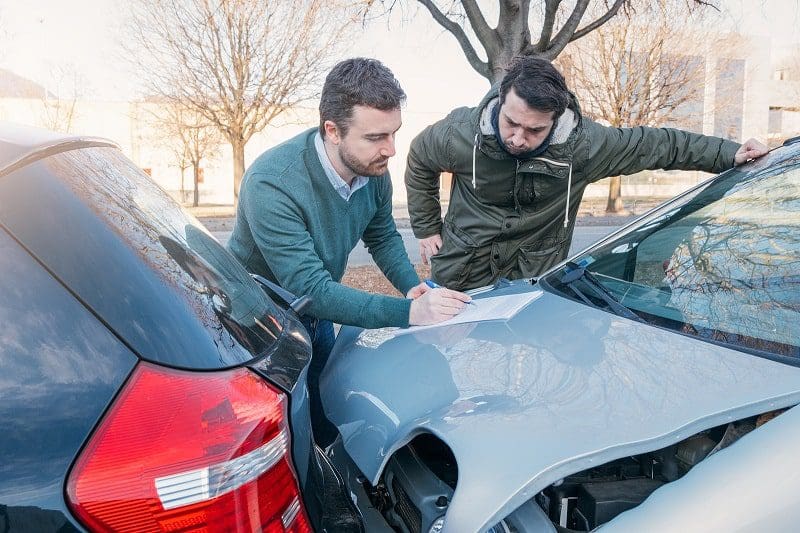How Much is the Average Uninsured Motorist Settlement?
Car accidents can be terrifying. A normal commute to work can become the source of serious pain, fear, and financial distress when it is interrupted by a crash. Insult is added to injury, though, when it is revealed that the other driver was not insured at the time of the collision. While most states forbid drivers from operating vehicles without insurance, getting hit by an uninsured motorist is all too common. Even if you’re a driver who follows the rules of the road, you can still fall victim to someone else’s carelessness. In this situation, speaking with a lawyer can help you navigate the car accident settlement process.
Find out the maximum compensation you could receive.
When accidents involve uninsured drivers, even a minor fender bender can become a major headache. Given the number of uninsured or underinsured motorists on the road, chances are good you’ll at some point find yourself involved in a collision with someone who fails to carry enough coverage to adequately cover the cost of damages. In most situations, the at-fault driver is responsible for paying for damages. In crashes where the at-fault driver was not insured, things get a little more complicated. While it’s easy to panic in such situations, there are options.
12 of the fifty states are considered no-fault, meaning every driver must fend for themselves when it comes to accident damage, regardless of whose caused the collision. In tort or at-fault states, the driver responsible for the crash is liable for damages. In such states, your insurance coverage will help determine whether you’ll be footing the cost of repairs and medical bills stemming from your crash.
What To Do If an Uninsured Driver Hits You
First Steps
Like with any other kind of car accident, checking for injuries should be the first thing that’s done in a collision with an uninsured driver. Move vehicles out of the way of traffic if it is safe to do so and call the police to report the accident. Even without insurance coverage, exchanging information with the other driver involved is important.Get their full name, phone number, home address and their license plate information. You’ll need this information to confirm they do not have insurance and that the accident qualifies you for uninsured motorist coverage – if you have it.
Like with any car accident, you should always contact the police and make sure an accident report is filed. No matter how small the incident might have been, phoning the authorities is a good way to ensure your accident is taken seriously. This is especially true when dealing with an uninsured motorist. A police report can help you get your costs covered while making the claims process a little easier.
Many uninsured drivers are eager to offer accident victims cash in exchange for not calling the police. After all, they face serious fines and fees for not obeying the law. After being hit by an uninsured motorist, it may be tempting to accept their offer. At the scene of an accident, though, you have no idea the amount of damage that has been done. Injuries could appear hours and even days after the wreck, leading to expensive medical bills. Even when the offer of cash seems to be better than nothing, hold off on accepting any money from the uninsured driver.
Before leaving the scene of an accident, it’s important to exchange information with the other motorists involved. Even if the driver does not have insurance, you’ll want to collect their name, phone number, address, driver’s license information, and license plate number. If any witnesses saw the accident occur, be sure to collect their contact information, too. Their statement could be invaluable when going through the claims process.
Making an Insurance Claim For Uninsured Driver
Consider also snapping a few pictures or videos of the accident scene before departing. Take shots of damage done to the car as well as any injuries you might have sustained. Photos of the traffic light, road signs, and flow of traffic can also help your insurance company understand how the incident occurred.
Most places require drivers to possess uninsured motorist coverage as part of their auto insurance policy. This helps to offset the financial damage done after you’ve been hit by an uninsured motorist. Filing a claim with your insurance company is the best way to recoup the costs associated with your crash. Your insurer will step in to provide compensation for your medical bills, car repairs and other related costs.
Don’t have uninsured motorist coverage? Another option is to file a car accident lawsuit and take the at-fault driver to court. You can sue for the expenses incurred because of their negligence behind the wheel. Unfortunately, though, many uninsured motorists do not have many assets, so even if a judge rules in your favor, recovering money that’s been awarded to you may be an uphill battle.
Uninsured Motorists Insurance
Purchasing uninsured motorist coverage before you need it is usually a wise move. Most companies offer this kind of addition to your policy for fairly affordable rates. Should you find yourself hit by an uninsured motorist, you’ll be glad to be covered. Many people do not have uninsured motorist coverage. In such cases, you’ll have to file a claim against your own collision coverage. To do so, you’ll need to gather all the evidence you can that the at-fault driver does not have insurance. The more proof you have, the quicker your claim will be handled. While repairs to your vehicle are likely, your insurance company will be less willing to cover other costs associated with the collision. In accidents with uninsured drivers or uninsured motorist coverage, your car insurance company won’t be reimbursing for any medical costs stemming from the crash.
Filing a Lawsuit Against an Uninsured Driver
Many people are eager to make the uninsured driver pay for the damage they have caused, even if they lack the coverage to do so. Even if you win in court, though, collecting won’t be easy. People who fail to carry car insurance are not likely to have the money to pay for the damage they cause in a collision. They rarely possess any valuable assets worth seizing to put towards your damages. Even if you take a person back to court to require the defendant to pay you, courts will recognize that you cannot get blood from a stone.
In some cases, however, the court may decide to offer up a payment plan option. While this may be initially satisfying, chances are good that the defendant will struggle to make payments and possibly even stop paying altogether. In such situations, you and your lawyer will have to go back to court yet again to try and compel the person to pay what they owe. It can take many years, if ever, to see reimbursement for your damages.



